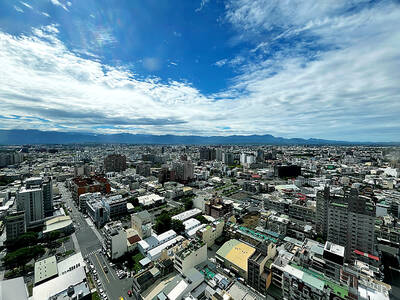A Chinese company has offered 4.34 billion kroner (US$640 million) to buy REC Solar ASA, headquartered in Norway, one of the last producers of solar panels still in Western hands, a move that might help the company circumvent trade disputes in the US and Europe.
The offer, by a unit of China National Chemical Corp (中國化工集團), follows a surge in demand for solar panels, which has absorbed much of the production that companies supported by the government in Beijing have built in the past decade.
Authorities in Brussels and Washington have imposed restrictions on Chinese solar panel imports after accusations from competitors that products were sold below cost. This has meant the Chinese companies that dominate the panel manufacturing industry have had to establish subsidiaries with factories abroad that are outside sanctions.
The deal was recommended by REC Solar’s board and has pledges from holders of 20.2 percent of the outstanding shares not to sell before a general meeting convened to approve the transaction, according to a statement released by the two companies in Oslo.
China National Chemical’s unit China National BlueStar Co (中國藍星集團) is set to complete the deal through a Norwegian unit, Elkem AS, which employs 2,100 and makes solar-grade silicon and other alloys.
REC Solar has 1,700 workers mainly making panels at a factory in Singapore. It was spun off in October last year from Renewable Energy Corp ASA, which had closed all its solar manufacturing capacity in Norway and focused on its solar polysilicon business, now known as REC Silicon ASA.

BYPASSING CHINA TARIFFS: In the first five months of this year, Foxconn sent US$4.4bn of iPhones to the US from India, compared with US$3.7bn in the whole of last year Nearly all the iPhones exported by Foxconn Technology Group (富士康科技集團) from India went to the US between March and last month, customs data showed, far above last year’s average of 50 percent and a clear sign of Apple Inc’s efforts to bypass high US tariffs imposed on China. The numbers, being reported by Reuters for the first time, show that Apple has realigned its India exports to almost exclusively serve the US market, when previously the devices were more widely distributed to nations including the Netherlands and the Czech Republic. During March to last month, Foxconn, known as Hon Hai Precision Industry

Taiwan Semiconductor Manufacturing Co (TSMC, 台積電) and the University of Tokyo (UTokyo) yesterday announced the launch of the TSMC-UTokyo Lab to promote advanced semiconductor research, education and talent development. The lab is TSMC’s first laboratory collaboration with a university outside Taiwan, the company said in a statement. The lab would leverage “the extensive knowledge, experience, and creativity” of both institutions, the company said. It is located in the Asano Section of UTokyo’s Hongo, Tokyo, campus and would be managed by UTokyo faculty, guided by directors from UTokyo and TSMC, the company said. TSMC began working with UTokyo in 2019, resulting in 21 research projects,

Taiwan’s property market is entering a freeze, with mortgage activity across the nation’s six largest cities plummeting in the first quarter, H&B Realty Co (住商不動產) said yesterday, citing mounting pressure on housing demand amid tighter lending rules and regulatory curbs. Mortgage applications in Taipei, New Taipei City, Taoyuan, Taichung, Tainan and Kaohsiung totaled 28,078 from January to March, a sharp 36.3 percent decline from 44,082 in the same period last year, the nation’s largest real-estate brokerage by franchise said, citing data from the Joint Credit Information Center (JCIC, 聯徵中心). “The simultaneous decline across all six cities reflects just how drastically the market

Ashton Hall’s morning routine involves dunking his head in iced Saratoga Spring Water. For the company that sells the bottled water — Hall’s brand of choice for drinking, brushing his teeth and submerging himself — that is fantastic news. “We’re so thankful to this incredible fitness influencer called Ashton Hall,” Saratoga owner Primo Brands Corp’s CEO Robbert Rietbroek said on an earnings call after Hall’s morning routine video went viral. “He really helped put our brand on the map.” Primo Brands, which was not affiliated with Hall when he made his video, is among the increasing number of companies benefiting from influencer